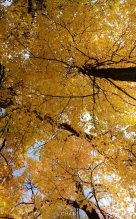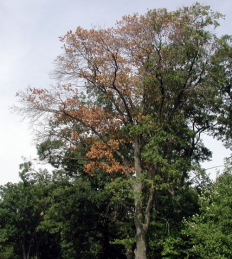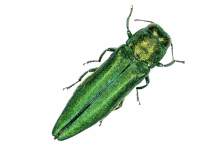Woodlot and Forest Management Virtual Workshop
This workshop was hosted by the Kalamazoo Conservation District to help you make some important decisions as to how to best manage your forest or woodlot no matter what the size of your property. You will learn about the value of having a forest management plan to help meet your goals such as habitat needs (game and non-game), invasive species identification and control, and timber harvests. Topics will include the importance of woodlot management, available programs, funding options, and tax incentives for your managed land.
You will learn about the following programs: Qualified Forest Program, Forest Stewardship Program, USDA Farm Bill EQIP (Environmental Quality Incentive Program), & MAEAP—Forest, Wetlands & Habitat Program.
This workshop was presented virtually on November 9, 2020. The PowerPoint presentations and video clips are available for viewing below.
Information about Michigan's Qualified Forest Program
Private landowners own over 11 million acres of forestland in Michigan. The purpose of the Qualified Forest Program (QFP) is to encourage private forestland owners to manage their land in an economically viable and environmentally sustainable manner. Landowners receive an exemption from local school operating taxes and/or exemptions from the uncapping of the taxable value of the property in the event of a change in ownership.
For more information, please visit: http://www.michigan.gov/QFP
Information about MDNR's Forest Stewardship Program
The Forest Stewardship program connects landowners with professional foresters to help them manage, protect and enjoy their forest.
Looking for a Forester? Here is an article from Bill Cook, retired MSUE forester
Oak wilt, caused by Ceratocystis fagacearum, is a lethal disease of oak (Quercus sp.). The disease is most serious on members of the red oak family, including red oak, scarlet oak, black oak, pin oak, etc. Members of the white oak family are generally not nearly as susceptible: white oak, swamp white oak, burr oak, etc. The disease is comparable to and potentially as serious as Dutch Elm Disease on American Elm. Both are introduced, exotic diseases caused by vascular wilt fungi; both diseases are transmitted by insects; both diseases can be transmitted through root grafts, and both fungi kill their host plants rather quickly.
To learn more about Oak Wilt:
Diagnosing and preventing Oak Wilt
Report suspect oak wilt in Michigan:
Department of Natural Resources Forest Health Division: DNR-FRD-Forest-Health@michigan.gov or by phone at (517) 284-5895.
OR
Use the Midwest Invasive Species Information Network (MISIN) online reporting tool
If possible, please take one or more photos of the invasive species you are reporting. Also make note of the location, date and time of the observation. This will aid in verification of your report. You may be asked to provide your name and contact information if follow-up is needed.
Emerald Ash Borer (EAB), Agrilus planipennis Fairmaire, is an exotic beetle that was discovered in southeastern Michigan near Detroit in the summer of 2002. The adult beetles nibble on ash foliage but cause little damage. The larvae (the immature stage) feed on the inner bark of ash trees, disrupting the tree's ability to transport water and nutrients. Emerald ash borer probably arrived in the United States on solid wood packing material carried in cargo ships or airplanes originating in its native Asia. As of October 2018, it is now found in 35 states, and the Canadian provinces of Ontario, Quebec, New Brunswick, Nova Scotia and Manitoba.
For more information:











